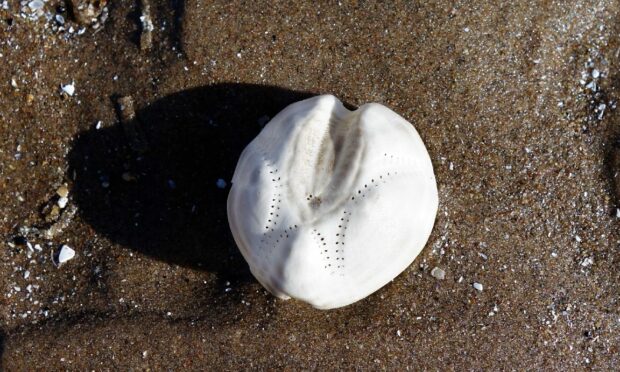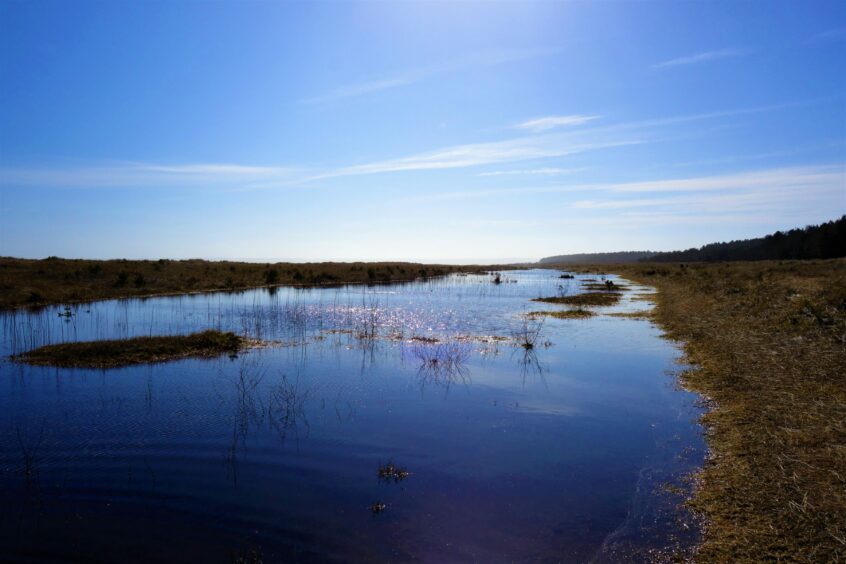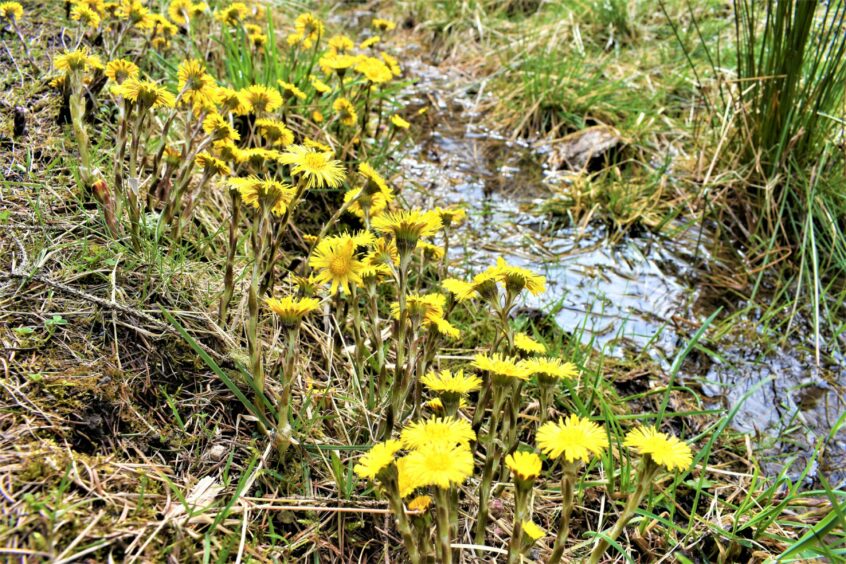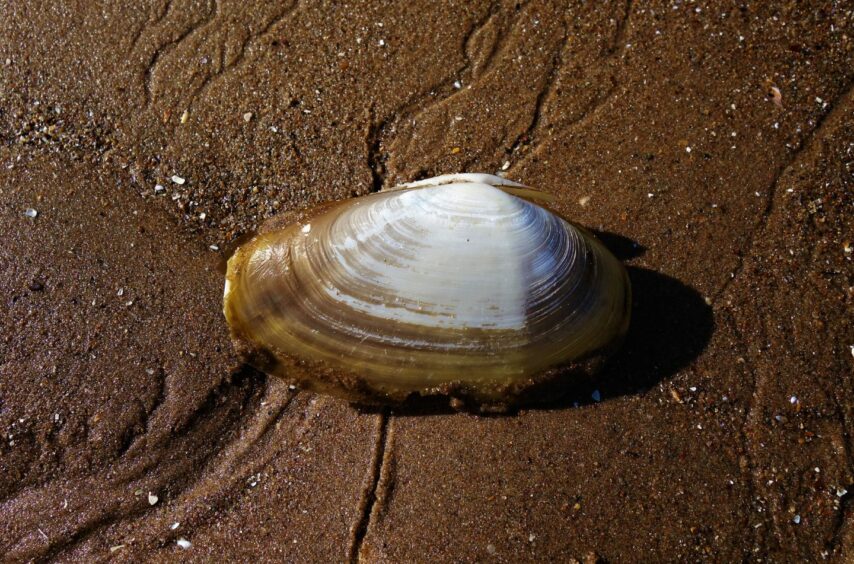A beautiful, sunny spring day brought the tempting lure of the beach, which caused a dilemma – should I go to St Cyrus, north of Montrose, or to Tentsmuir in Fife?
Tentsmuir won in the end, and as I stepped my way carefully across its marram-scattered sand-dunes, the air was filled with the songs of skylarks as they soared up into the heavens on flickering wings.
A very high spring tide had inundated a wonderful watery channel that ran almost the whole length of the dunes, creating sparkling pools and ponds.
These hollows in the dune slacks, sit close to the water table below, creating ephemeral and brackish pools, which are rich in plant life and invertebrates.
In one large pool, a group of teal had congregated, which busily up-ended in the shallows as they sifted the weedy bottom for tiny invertebrates.
After a while, they drifted to a quiet edge, where they beached themselves to rest.
Age-old remedies in the dunes
In among the dunes, I found the yellow dandelion-like flowers of coltsfoot, one of our earliest flowering spring plants.
In the past, coltsfoot was used as a remedy for coughs, colds and sore throats, and is sometimes called coughwort.
The plant flowers before it develops leaves, giving it the folk name of ‘son-before-father’.
The leaves, once unfurled, are large and hoof-shaped, which is where the plant’s common name derives from.
I left the dunes and wandered onto the vast expanse of the beach.
In the north, I could see the headland of Scurdie Ness, just south of Montrose.
If I was transported over there, I thought, I would be able to see St Cyrus and all the way up the coast towards Stonehaven.
And if I was in Stonehaven, the vista north would have stretched towards the Sands of Forvie beyond Aberdeen.
Seashell spotting
The air was hazier to the south, but on a clear day, I would have been able to see as far as Fast Castle Head in Berwickshire, which brought into my mind what a small country we live in.
As ever when on a beach, my eyes were drawn to the sand, and as I slowly wandered along its vast expanse, all kinds of interesting seashells shone out at me, including otter shells, razor shells and surf clams.
There were also the numerous empty and brittle shells of sea potatoes.
Slightly larger than a golf ball and heart-shaped, sea potatoes are a type of sea urchin, which live buried in the sand.
When living, they are covered in short, yellow-brown spines, which have a rough fur-like appearance, but these are shed when the animal succumbs.
The scientific name translates literally to ‘spiny heart’, in reference to the unusual shape.
Sea potatoes feed on organic matter and use their tube feet to burrow through sediment on the seabed.
One scientific study described the sea potato as ‘one of the important ecosystem engineers in seafloor environments.’
The sea potato is truly remarkable, a largely unseen denizen of our coastal shallows, but one which packs a powerful ecological punch.













